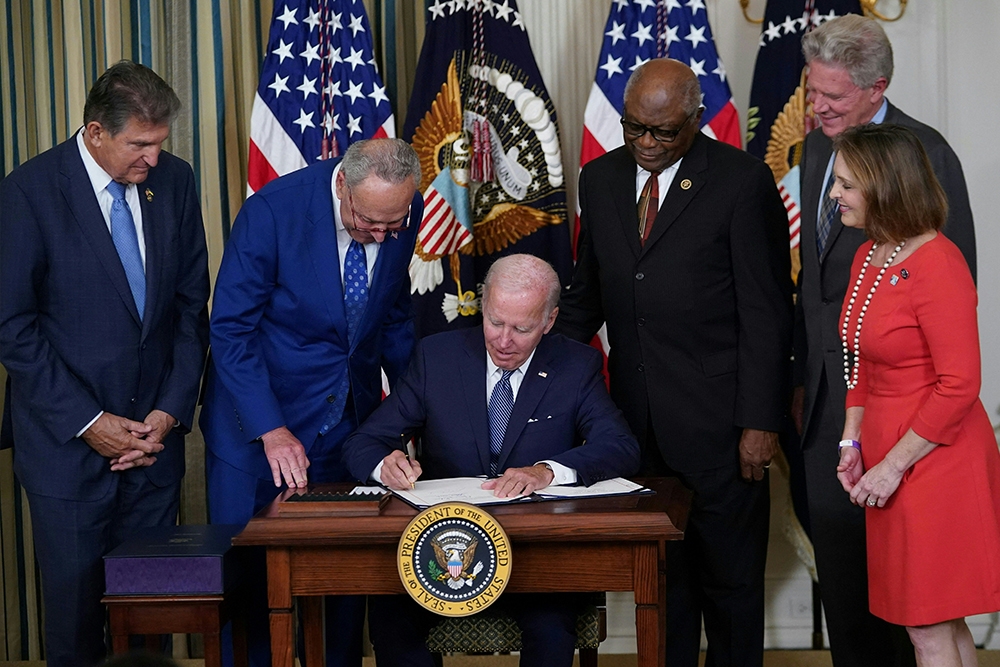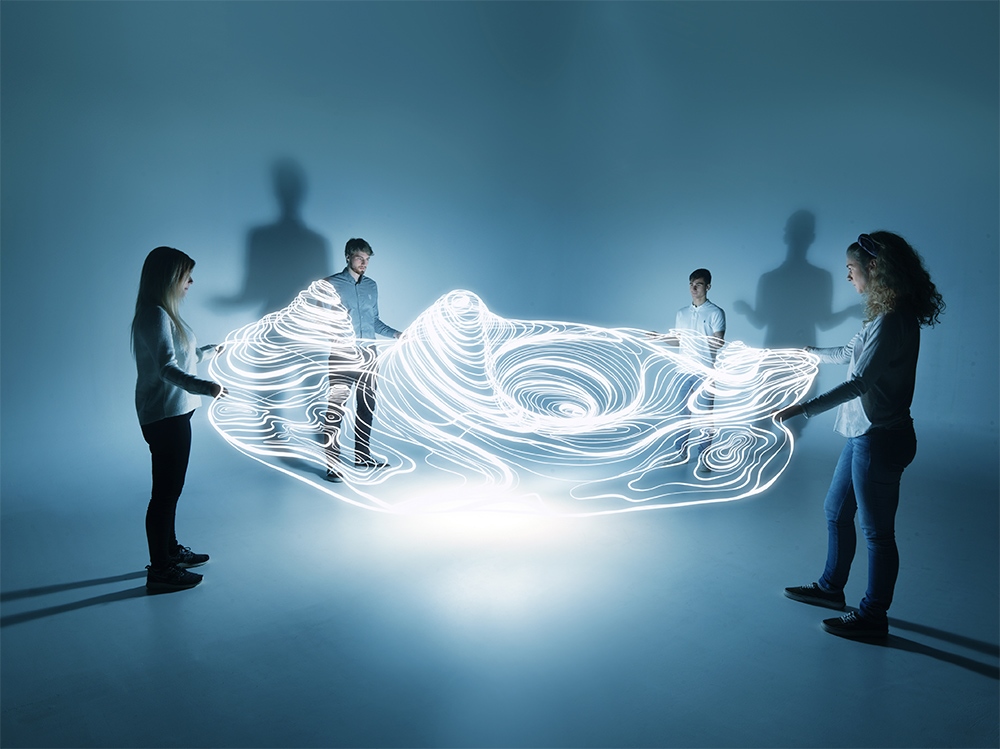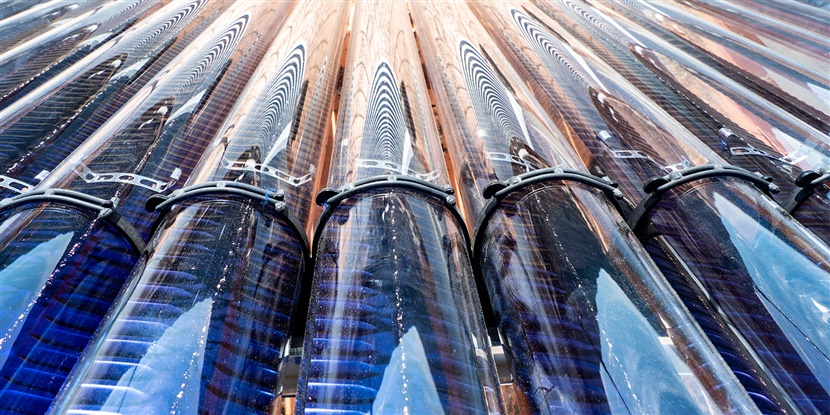By Mike Zis and Trevor Getz
This week, President Biden signed the Inflation Reduction Act (IRA). While you wouldn’t know it from its name, this bill includes the largest package of climate-related policy in US history. Policy experts say that the $369 billion in climate and energy funding will accelerate the development of clean energy in America. They project that this will enable the US to triple its production of clean energy and reduce projected greenhouse gas emissions by almost half. Doing so will help us avert the worst impacts of climate change.
 President Joe Biden signs the Inflation Reduction Act. From left to right: Senator Joe Manchin, Senator Chuck Schumer, President Joe Biden, Representative James Clyburn, Representative Frank Pallone, and Representative Kathy Castor. © MANDEL NGAN/AFP via Getty Images.
President Joe Biden signs the Inflation Reduction Act. From left to right: Senator Joe Manchin, Senator Chuck Schumer, President Joe Biden, Representative James Clyburn, Representative Frank Pallone, and Representative Kathy Castor. © MANDEL NGAN/AFP via Getty Images.
Your students should care about this bill. We think that the IRA could personally impact them for the better in at least three ways: first, by creating new educational and job opportunities for them in green energy and related fields; second, by making green technologies like electric cars easier for their families to afford; and third, by providing pollution-reducing grants that their communities and schools can apply for.
Your students should know about these opportunities, and should see in them ways they can act to help themselves, their communities, and the whole world at the same time. In the Climate Project extension course, we have designed a process for students to take action against climate change by preparing themselves for green careers, educating their peers and communities, and undertaking community-wide or school-level civic activities. The IRA gives them additional opportunities in all these areas. Here’s how.
Careers
Let’s start with something practical. A lot of the funding that the IRA makes available is aimed at growing the manufacturing of clean energy in the US. Another piece provides $1.5 billion over five years for the development of new laboratories and research facilities. Together, these provisions should stimulate the work of scientists, engineers, and tradespeople working together to combat climate change. But those are all people with degrees and careers. There’s nothing meaningful here for students, right?
Wrong!
If the US government is investing billions of dollars in solar, wind, batteries, and heat pumps, private sector investment and job opportunities will follow. Whether in funding research for developing new technologies like carbon-free factories or expanding existing ones like electric car charging stations, the IRA is creating jobs starting now and stretching over the next ten years—just the right time frame for your students. One of the things they can do to take advantage of these new opportunities is to research possible careers as scientists and engineers, architects and infrastructure planners, grant writers and community leaders, solar installers and electric vehicle mechanics.
 Real innovation will require teams of scientists, engineers, administrators, grant-writers, and even teachers. © Hispanolistic / Getty Images.
Real innovation will require teams of scientists, engineers, administrators, grant-writers, and even teachers. © Hispanolistic / Getty Images.
In the Climate Project extension course, we provide students with tools to think about future careers, including graphic biographies of people like them who have entered careers like creating hydrogen fuels more efficiently, capturing energy from devices to heat and cool your house, and training formerly incarcerated people to install solar panels.
Households
The biggest provision of the IRA helps everyday people act against climate change by making clean energy more affordable. Much of this funding will come in the form of tax credits like $6,000 for a typical $20,000 solar household rooftop installation or up to $7,500 to help low-income and middle-income families buy new electric cars or $4,000 for used ones. The goal is to make it easier for people to afford cleaner, lower-carbon emitting technologies which can be used to replace dirtier technologies that produce carbon, methane, and other greenhouse gasses that contribute to climate change.
Students should know that the IRA can directly benefit them, their family, and their neighbors. That means they have an opportunity to educate their community about these incentives. What might that look like? Flyers? Presentations at community events? Sharing information with their friends? Creating TikToks? Maybe all these things! These are the kinds of projects students are encouraged to take up for the culminating assignment in the class: the Climate Summit.
At the Summit, students present creative ways to educate people in their communities on issues they care about and ones they’ve carefully researched. We know that people listen the most to members of their own community, so young people talking to each other and to family friends can be really powerful. Maybe your students can devise a way to reach out to their community that people our age haven’t even thought of!
Communities and schools
And speaking of community, a lot of this money will come in the form of grants that will allow states, local and Tribal governments, and qualified non-profit organizations to invest in projects intended to reduce or avoid greenhouse gas emissions and other harmful air pollutants. While school districts can’t apply directly, there’s grant money that your school can benefit from. For example, there’s $400 million in grants that nonprofit school transportation associations can apply for to replace their school buses with electric ones. There are also grants to help schools in low-income and disadvantaged communities reduce emissions or their exposure to pollution by replacing outdated school ventilation systems or developing environmental action plans. Of course, a lot of the money will go to non-school projects—grants, for example, to support the restoration of coastal areas and forests.
 Working together, your students might help develop an environmental action plan, or support a community grant application. © Henrik Sorensen / Getty Images.
Working together, your students might help develop an environmental action plan, or support a community grant application. © Henrik Sorensen / Getty Images.
The money will not be given away willy nilly; communities will have to apply for these grants. That’s a pretty heavy lift, and students may need to play a role in persuading their community leaders to pursue these funds. They could go to a public meeting to call for their community to apply, or maybe write a letter to their elected official suggesting the idea. They might also play a role in providing support to the people in their town or neighborhood who are making the application, possibly by writing letters about how climate change and pollution have affected them and their families. Students might get some ideas for these actions through resources like the Climate Project’s Action Opportunities activity.
So you see, there’s a lot in this new climate bill for your students, their families, and their communities. It’s a great example of how a really big bill can impact us individually. Why not help your students discover what the IRA means for them? Head over to the Climate Project online teacher community to share your ideas for getting your students involved in the IRA.
About the authors:
Michael Zis has taught undergraduates at Macalester College since 2003, teaching courses jointly in the Political Science and Environmental Studies departments. In 2021, he was selected as a Periclean Faculty Leader for the first cohort of the Periclean Faculty Leadership Program (PFL) in STEM and Social Sciences, supported by The Arthur Vining Davis Foundations and The Eugene M. Lang Foundation. A recipient of the Campus Compact President Award for Civic Engagement, Michael has created lasting community collaborations around the themes of health care, environmental sustainability, and food policy and led urban colloquia in the Pacific Northwest on community building, multiculturalism, inequality, and sustainability. Michael represented Macalester at the 2021 United Nations Climate Change Conference (COP 26) in Glasgow, Scotland.
Trevor Getz is Professor of African History at San Francisco State University. He has written eleven books on African and world history, including Abina and the Important Men. He is also the author of A Primer for Teaching African History, which explores questions about how we should teach the history of Africa in high school and university classes.
Cover image: Detail of the front view of a solar water panel heater on a roof. © Jose A. Bernat Bacete / Moment / Getty Images.
 For full access to all OER Project resources AND our amazing teacher community,
For full access to all OER Project resources AND our amazing teacher community, 
Top Comments
-

Julianne Horowitz
-
Cancel
-
Up
+2
Down
-
-
Reply
-
More
-
Cancel
Comment-

Julianne Horowitz
-
Cancel
-
Up
+2
Down
-
-
Reply
-
More
-
Cancel
Children